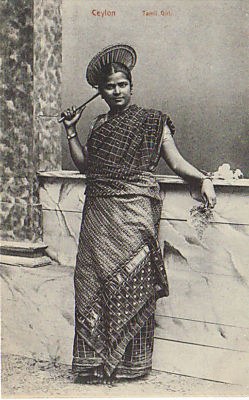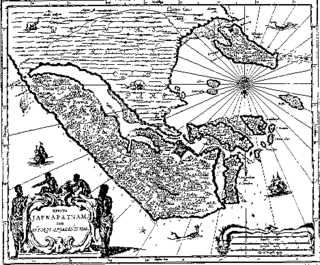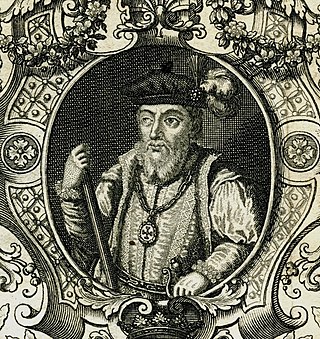Related Research Articles

The Jaffna Kingdom, also known as Kingdom of Aryachakravarti, was a historical kingdom of what today is northern Sri Lanka. It came into existence around the town of Jaffna on the Jaffna peninsula and was traditionally thought to have been established after the invasion of Kalinga Magha from Kalinga in India. Established as a powerful force in the north, northeast and west of the island, it eventually became a tribute-paying feudatory of the Pandyan Empire in modern South India in 1258, gaining independence when the last Pandyan ruler of Madurai was defeated and expelled in 1323 by Malik Kafur, the army general of the Delhi Sultanate. For a brief period in the early to mid-14th century it was an ascendant power in the island of Sri Lanka, to which all regional kingdoms accepted subordination. However, the kingdom was overpowered by the rival Kotte Kingdom around 1450 when it was invaded by Prince Sapumal under the orders of Parakramabahu VI.

Sri Lankan Tamils, also known as Ceylon Tamils or Eelam Tamils, are Tamils native to the South Asian island state of Sri Lanka. Today, they constitute a majority in the Northern Province, live in significant numbers in the Eastern Province and are in the minority throughout the rest of the country. 70% of Sri Lankan Tamils in Sri Lanka live in the Northern and Eastern provinces.
Bharatha People also known as Bharatakula and Paravar, is an ethnicity in the island of Sri Lanka. Earlier considered a caste of the Sri Lankan Tamils, they got classified as separate ethnic group in the 2001 census. They are descendant of Tamil speaking Paravar of Southern India who migrated to Sri Lanka under Portuguese rule. They live mainly on the western coast of Sri Lanka and mainly found in the cities of Mannar, Negombo and Colombo.
Karaiyar is a Sri Lankan Tamil caste found mainly on the northern and eastern coastal areas of Sri Lanka, and globally among the Tamil diaspora.

Cankili I, also known as Segarasasekaram, is the most remembered Jaffna kingdom king in the Sri Lankan Tamil history. He was very active in resisting Portuguese colonial inroads into Sri Lanka. He also inherited his throne via palace intrigues in which number of heirs apparent died under mysterious circumstances. At the end, he was removed from power by a local uprising that led to his son Puviraja Pandaram taking nominal power from him.

The American Ceylon Mission (ACM) to Jaffna, Sri Lanka started with the arrival in 1813 of missionaries sponsored by the American Board of Commissioners for Foreign Missions (ABCFM). Although they had originally planned to work in Galle, the British colonial office in Ceylon restricted the Americans to out-of-the-way Jaffna due to the security concerns of the British who were warring with France at the time. The critical period of the impact of the missionaries was from the 1820s to early 20th century. During this time, they engaged in original translations from English to Tamil, printing, and publishing, establishing primary, secondary and tertiary educational institutions and providing health care for residents of the Jaffna Peninsula. These activities resulted in many social changes amongst Sri Lankan Tamils that survive even today. They also led to the attainment of a lopsided literacy level among residents in the relatively small peninsula that is cited by scholars as one of the primary factors contributing to the recently ended civil war. Many notable educational and health institutions within the Jaffna Peninsula owe their origins to the missionary activists from America. Missionaries also courted controversy by publishing negative information about local religious practices and rituals.

Cankili II was the last king of the Jaffna kingdom and was a usurper who came to throne with a palace massacre of the royal prince and the regent Arasa-kesari in 1617. His regency was rejected by the Portuguese colonials in Colombo, Sri Lanka. His reign was secured with military forces from the Thanjavur Nayaks and Karaiyar captains. He was defeated by the Portuguese in 1619 and was taken to Goa and beheaded. With his death the Aryacakravarti line of Kings who had ruled the kingdom for over 300 years came to an end.
Ethirimanna Cinkam was the penultimate ruler of the Aryacakravarti line of Kings of the Jaffna Kingdom in northern Sri Lanka. He came to power due to the second Portuguese expedition led by André Furtado de Mendonça in 1591. In that expedition, the King of Jaffna, Puviraja Pandaram and the father of Ethirimnna Cinkam was killed.

Puviraja Pandaram ruled the Jaffna kingdom during a period of chaos during and after the death of his father Cankili I in 1565. He became king in 1561 following a local uprising against Cankili I. Although he was the nominal king, Cankili I wielded real power behind the throne until his death in 1565. After Cankili's death, Puviraja Pandaram lost power to one Kasi Nainar and Periyapillai. After the death or abdication of Periyapillai in 1582, Puviraja Pandarm was nominated as the king for the second time.
Periyapillai was of one of the Aryacakravarti rulers of Jaffna kingdom who followed in the chaotic period after the death of Cankili I(1519–1561). Some sources claim that he deposed the Cankili I's son, Puviraja Pandaram as soon as Cankili I died. Others say that there was an intermediate ruler named Kasi Nainar between him and the death of Cankili I. He with the help of Thanjavur Nayak help mounted an attack on the Portuguese fort in the Mannar Island to regain territory lost during Cankili's rule but he was defeated. Due to a local uprising he lost power to Puviraja Pandaram. He is considered to be the father of the last king of the Kingdom, Cankili II and Migapulle Arachchi.
Migapulle Arachchi also known as Chinna Migapillai, was a feudal lord from the Jaffna Kingdom who became a rebel leader just after its annexation by the Portuguese Empire in 1619. His title Arachchi, is a title given to the commanders of Lascarins or native military forces.

The Portuguese conquest of the Jaffna Kingdom occurred after Portuguese traders arrived at the rival Kotte Kingdom in the southwest of modern Sri Lanka in 1505. Many kings of Jaffna, such as Cankili I, initially confronted the Portuguese in their attempts at converting the locals to Roman Catholicism, but eventually made peace with them.

Dom Constantino of Braganza was a Portuguese nobleman, conquistador, and administrator of the Portuguese Empire. Born a member of the powerful House of Braganza, he is best known for having served as Viceroy of Portuguese India and for initiating the Portuguese conquest of Sri Lanka.

Portuguese Ceylon is the name given to the territory on Ceylon, modern-day Sri Lanka, controlled by the Portuguese Empire between 1597 and 1658.

Jaffna is the capital city of the Northern Province of Sri Lanka. It is the administrative headquarters of the Jaffna District located on a peninsula of the same name. With a population of 88,138 in 2012, Jaffna is Sri Lanka's 12th most populous city. Jaffna is approximately six miles from Kandarodai which served as an emporium in the Jaffna peninsula from classical antiquity. Jaffna's suburb Nallur served as the capital of the four-century-long medieval Tamil Jaffna Kingdom.
When to date the start of the history of the Jaffna kingdom is debated among historians.

Ruins of the Jaffna Kingdom refer to the remains of the remaining building structures of the Jaffna Kingdom, the royal abode and structure of the ruling dynasty of the Kingdom of Jaffna, Nallur, Jaffna in Northern Sri Lanka.

Sinhalese–Portuguese conflicts refers to the series of armed engagements that took place from 1518 to 1658 in Sri Lanka between the native Sinhalese kingdoms and the Portuguese Empire. It spanned from the Transitional to the Kandyan periods of Sri Lankan history. A combination of political and military moves gained the Portuguese control over most of the island, but their invasion of the final independent kingdom was a disaster, leading to a stalemate in the wider war and a truce from 1621. In 1638 the war restarted when the Dutch East India Company intervened in the conflict, initially as an ally of the Sinhalese against the Portuguese, but later as an enemy of both sides. The war concluded in 1658, with the Dutch in control of about half the island, the Kingdom of Kandy the other half, and the Portuguese expelled.
The Portuguese invasion of Jaffna Kingdom in 1560 AD was the first expedition against the Jaffna Kingdom by the Portuguese Empire. It was led by Viceroy Dom Constantino de Bragança and resulted in the capture of the capital, Nallur. The king of Jaffna, Cankili I, managed to escape and regained the capital through a pact that he made with the Portuguese. He subsequently incited a peoples' rebellion against the Portuguese, resulting in their withdrawing their forces from Nallur. The Jaffna Kingdom, however, lost its sovereignty over Mannar Island and its main town, Mannar.
Varunakulattan was a 17th-century feudal lord and military commander from the Jaffna Kingdom. He led a rebellion as the military commander of Thanjavur Nayak against the Portuguese in their conquest of the Jaffna kingdom in 1619. Although the nominal king was Cankili II, Varunakulattan was described as the king of Karaiyars, and wield the real power in the Jaffna Peninsula.
References
- Abeysinghe, Tikiri (2005). Jaffna under the Portuguese. Colombo: Stamford Lake. p. 66. ISBN 955-1131-70-1 .
- Gunasingam, Murugar (1999). Sri Lankan Tamil nationalism. Sydney: MV. p. 238. ISBN 0-646-38106-7.